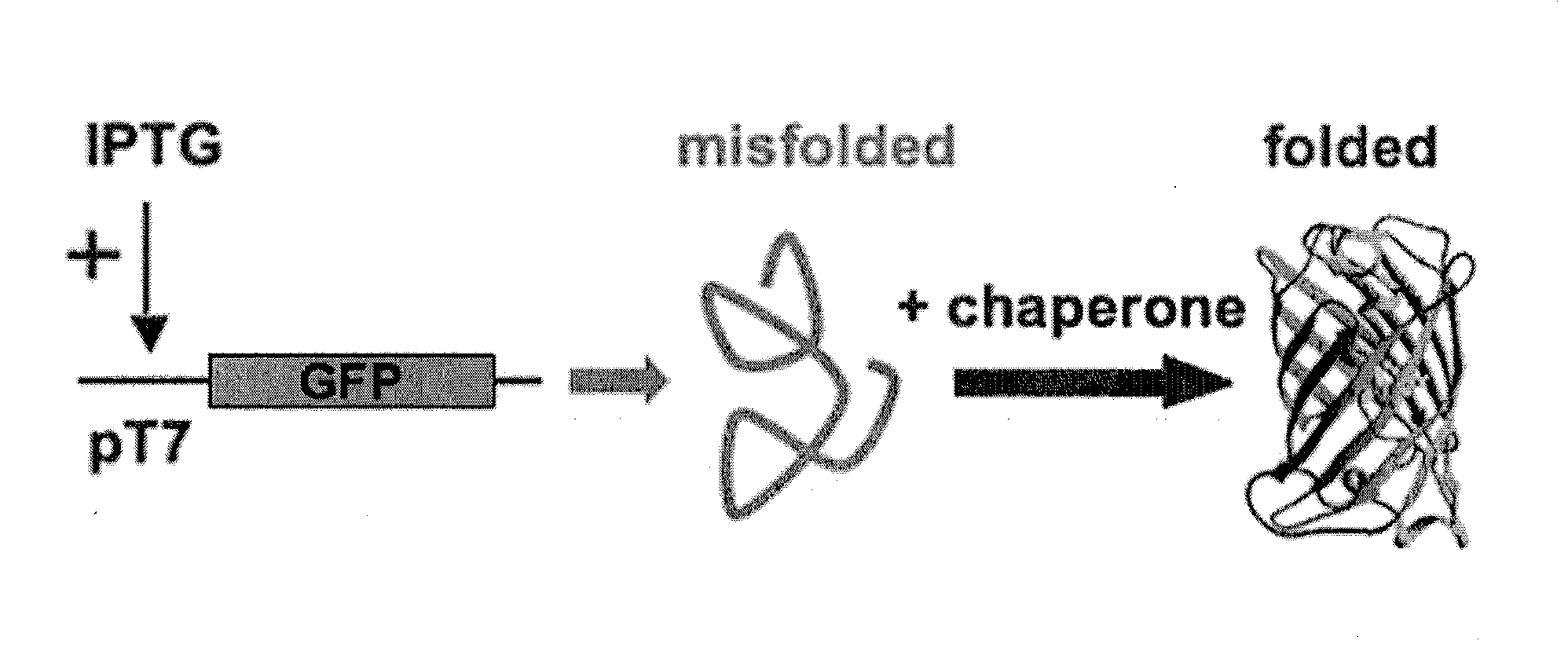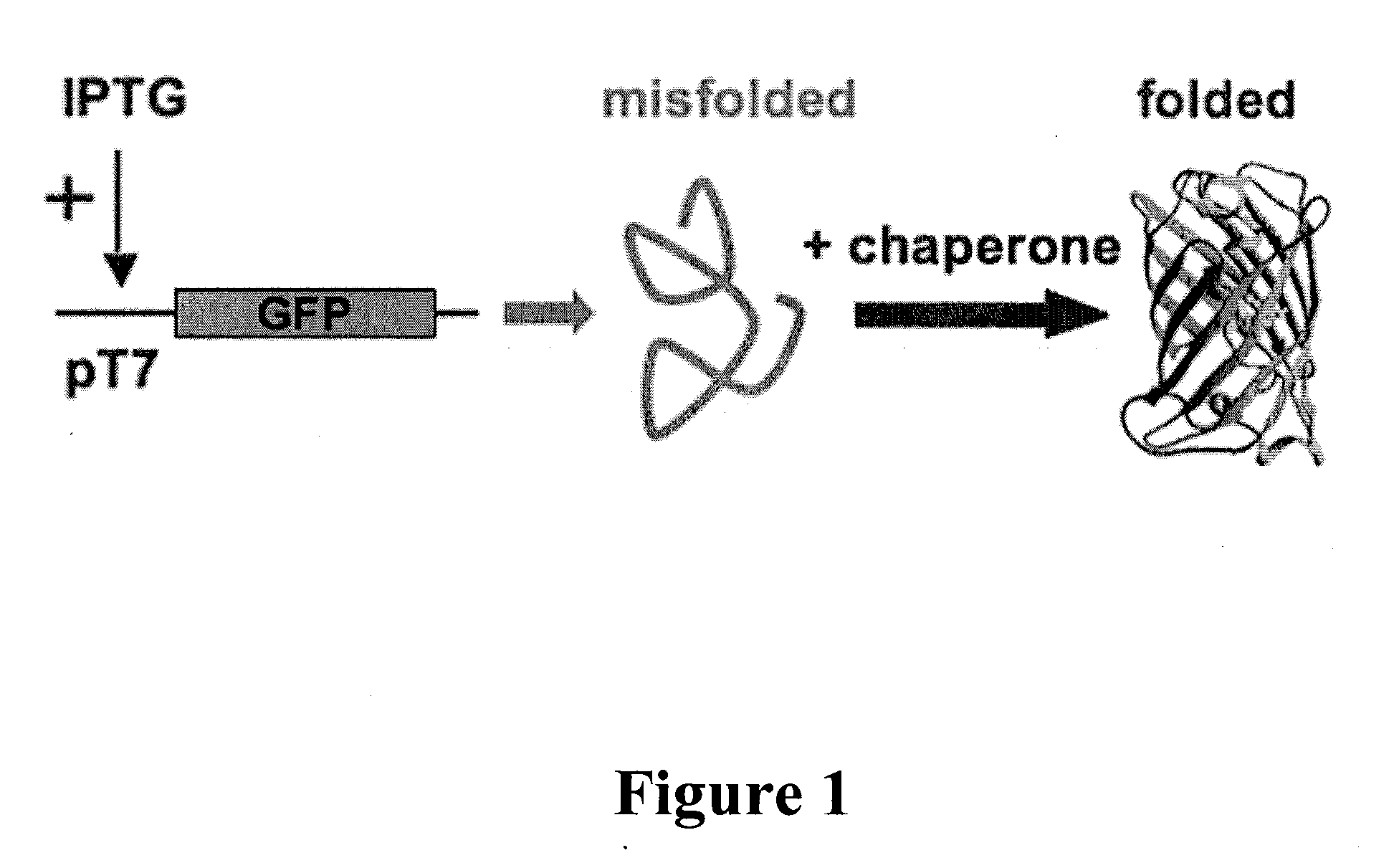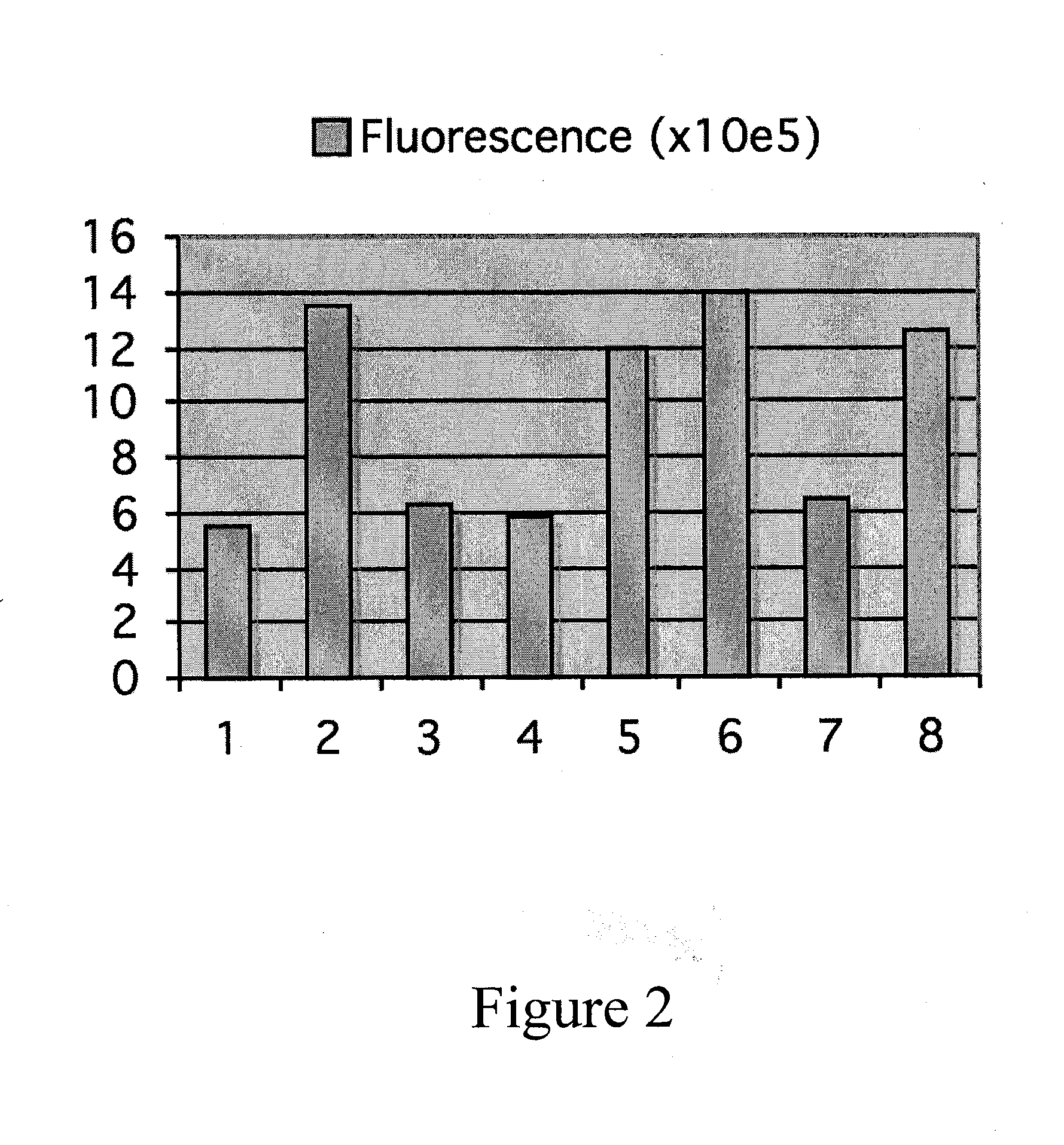Folding of recombinant proteins via co-expression of archaeal chaperones
a technology of archaeal chaperone and recombinant proteins, which is applied in the field of recombinant protein production, can solve the problems of limited success, unpredictable and time-consuming methods for vitro refolding of purified inclusion bodies, and protein insolubility remains a major stumbling block, so as to enhance the folding of expressed natives.
- Summary
- Abstract
- Description
- Claims
- Application Information
AI Technical Summary
Benefits of technology
Problems solved by technology
Method used
Image
Examples
examples
Materials and Methods
[0062]Plasmids: The wild-type gene for green fluorescent protein from the jellyfish Aequorea victoria was amplified from plasmid pPD79.44 (a gift of Andy Fire) by PCR with gene-specific primers that also encoded EcoRI (5′) and NotI (3′) restriction sites. The PCR product was digested with EcoRI and NotI, and cloned into expression vector pET28a (Novagen) digested with the same two restriction enzymes to create pET-GFP. A similar approach was taken for the cloning of archaeal chaperones. Each was amplified from genomic DNA from the respective organism with gene-specific primers that included flanking restrictions sites appropriate for directional cloning into pET expression vectors pET11a (P. furiosus chaperonin; NcoI and BamHI sites), pET19b (P. furiosus prefoldin, prefoldin, and NAC, plus M. jannaschii prefoldin; all NdeI and XhoI), or pETDuet-1 (M. burtonii chaperonin and sHSP; each NdeI and XhoI). For each plasmid, DNA sequencing confirmed that the amplified ...
PUM
| Property | Measurement | Unit |
|---|---|---|
| Atomic weight | aaaaa | aaaaa |
| Atomic weight | aaaaa | aaaaa |
| Atomic weight | aaaaa | aaaaa |
Abstract
Description
Claims
Application Information
 Login to View More
Login to View More - R&D
- Intellectual Property
- Life Sciences
- Materials
- Tech Scout
- Unparalleled Data Quality
- Higher Quality Content
- 60% Fewer Hallucinations
Browse by: Latest US Patents, China's latest patents, Technical Efficacy Thesaurus, Application Domain, Technology Topic, Popular Technical Reports.
© 2025 PatSnap. All rights reserved.Legal|Privacy policy|Modern Slavery Act Transparency Statement|Sitemap|About US| Contact US: help@patsnap.com



